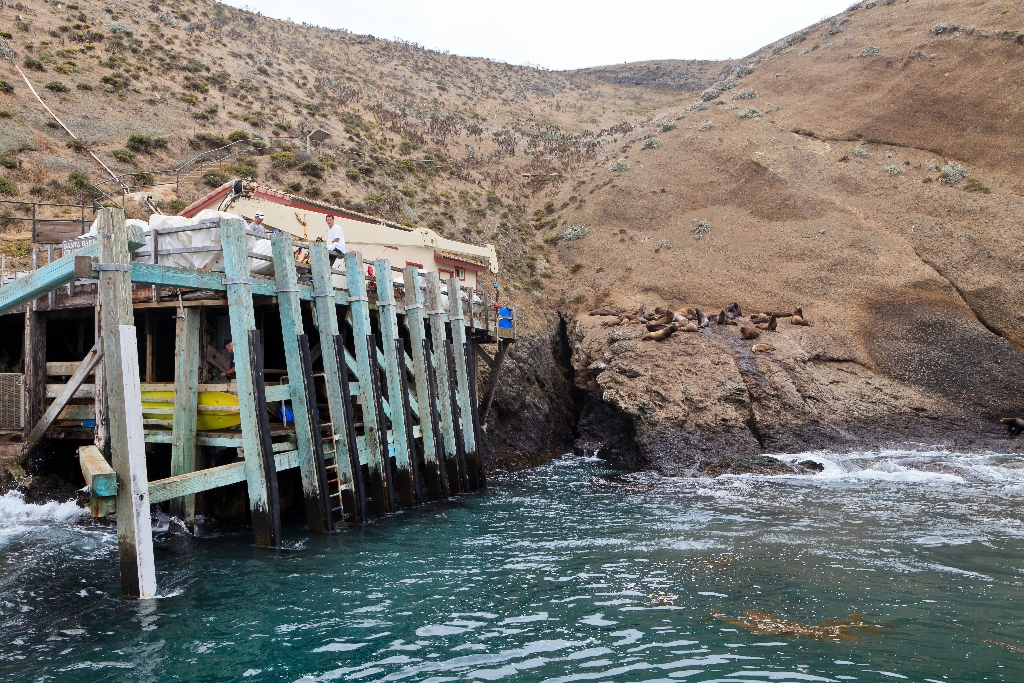
Since Santa Barbara is a cliff island, access to top is only at the Landing Cove where visitors step from the boat onto a ladder to a small dock. From the dock, visitors must climb 200 feet along a ¼-mile trail to the top of the island.
Historical Information
Around 1916, Alvin Hyder rebuilt the pier at the landing, where they unloaded supplies and equipment with a boom. Hyder rigged a sled on wood tracks down the steep slope between the landing and house. According to Buster Hyder, Alvin's son, "We had a sled on the track that we let up and down with a long rope. That was all volcanic rock we had to drill to cement those spikes in for the track. Talk about workin'. We done it all with pick and shovel. The tracks went right up over the top of the hill. We used the sled for getting everything heavy to the top of the island or back down. The bottom of the track was set on the landing, and when the sled would come down, we would come down, we'd fill it up."
Buster Hyder recalled keeping the rounded out two-by-four wooden tracks greased with oil. A horse pulled the sled up the track, and the people lowered it by hand. The horse named Dan, listened for a signal from below to start hauling, and stopped in just the right place when the load was at the barn. Hyder family members widened the existing narrow trail from the landing to the houses, breaking up the volcanic rock with picks; ten-year-old Buster was then assigned to keep it clear of rocks and dirt with a shovel.
By 1942, the Navy, as part the Santa Barbara Island Coastal Lookout Station, completed the construction of a new dock and a small-gauge steel rail tramway with metal car that ran from the dock to the Quonset huts at the top of the cliffs above the landing cove. The tramway was operated by an electric-powered winch in a shed.
The landing dock area had two levels, the first that was reached by a vertical ladder from a small boat. Large boats could not get close to the landing because of the shallow water and shore structure. The second level was connected to the lower landing by stairs. The upper landing had an open shed used for storing gear, a large I-beam with a trolley for hoisting heavy loads, and the lower section of a rail tramway.
A hoisting unit for the tram car was located at the top of the bluff at the upper station of the rail tramway. The prime mover was a Ford V-8 engine. The hoist was equipped with about 250 feet of 1/2" steel wire rope. The free end of the rope was attached to the tram car.
The NPS updated the dock a couple of times prior to a complete reconstruction in the early 1980s when a new dock with a hoist and a boathouse were built. However, just like the Hyder and Navy dock, this NPS dock was frequently damaged by strong winter storms, including in 2016 and again in 2018.
Is there something we missed for this itinerary?
Itineraries across USA


















































